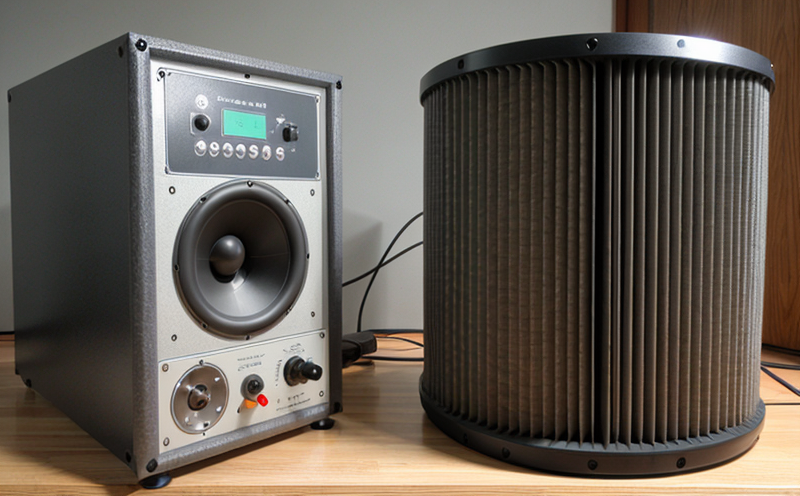ISO 20816-1 Mechanical Vibration Testing of Rotating Equipment
The ISO 20816 series addresses the mechanical vibration testing of rotating equipment, providing a standardized approach to assessing the operational state and condition-based maintenance strategies. This particular standard focuses on the measurement and analysis of vibrations in rotating machinery such as pumps, compressors, turbines, and other similar devices.
The ISO 20816-1 specifically provides guidelines for the determination of permissible limits of vibration amplitude in rotating equipment under normal operating conditions. It aims to ensure that mechanical systems operate within specified limits to prevent failures due to excessive vibrations. Compliance with this standard is crucial for industries relying heavily on reliable machinery, such as oil and gas, power generation, and manufacturing.
Understanding the parameters involved in ISO 20816-1 testing requires a comprehensive approach. The vibration amplitude is measured using accelerometers placed strategically around the machine to capture both horizontal and vertical components of vibration. These measurements are then analyzed against the permissible limits specified within the standard.
The process involves several critical steps:
- Identification and selection of appropriate sensors
- Installation of sensors in strategic locations
- Data acquisition and recording
- Analyzing data against ISO 20816-1 limits
- Interpretation results to determine machine health
The importance of this testing cannot be overstated. Machinery failures can lead to significant downtime, increased maintenance costs, and potential safety hazards. By adhering to ISO 20816-1, industries can proactively manage their machinery’s condition, extending its operational life and enhancing overall reliability.
Our laboratory employs state-of-the-art equipment and experienced personnel to perform these tests accurately and efficiently. We use precision accelerometers that are calibrated according to international standards to ensure reliable data collection. Our analysts have extensive experience in interpreting vibration data and providing actionable insights based on the results of ISO 20816-1 testing.
The primary goal is not just compliance but also continuous improvement through predictive maintenance strategies informed by this testing. By staying ahead of potential issues, enterprises can significantly reduce unplanned downtime and associated costs, thereby optimizing their operations and enhancing safety standards.
Why It Matters
The significance of ISO 20816-1 mechanical vibration testing lies in its ability to provide a robust framework for the assessment of rotating machinery's health. This standard is essential because it ensures that equipment operates within safe and efficient parameters, reducing the risk of premature failures.
Properly conducted vibration tests can identify subtle changes indicative of developing problems before they escalate into major issues. This early detection capability allows for timely interventions such as scheduled maintenance or repairs, which ultimately leads to extended equipment life and reduced operational costs.
In industries where machinery plays a crucial role in production processes, the reliability of this equipment is paramount. For example, in oil refineries, any disruption in critical pumps or compressors could halt entire operations. Similarly, power plants rely heavily on turbines that must operate continuously without failure. In such environments, compliance with ISO 20816-1 ensures consistent performance and safety.
Moreover, adherence to this standard demonstrates a commitment to quality control and regulatory compliance, which can enhance an organization’s reputation among clients and stakeholders. It also facilitates smoother interactions during audits by ensuring that all testing procedures meet internationally recognized standards.
Applied Standards
The ISO 20816 series is designed to provide a comprehensive approach to mechanical vibration testing of rotating equipment. This includes several parts, each addressing different aspects of the testing process. Part 1 specifically deals with determining permissible limits of vibration amplitude in rotating machinery.
ISO 20816-1 emphasizes the importance of selecting appropriate measurement points and establishing reference values based on specific machine types. It specifies the frequency bands over which measurements should be conducted, highlighting that certain frequencies are more indicative of particular fault conditions than others.
The standard also provides detailed instructions for setting up sensors, including considerations about sensor placement relative to the direction of vibration propagation. Additionally, it outlines methods for processing raw data obtained from these sensors into useful information regarding machine condition.
Compliance with ISO 20816-1 ensures that all aspects of mechanical vibration testing are conducted in a standardized manner, ensuring consistency across different facilities and regions. This standardization is crucial not only within individual organizations but also when collaborating with partners or regulators worldwide who may reference these standards.
Use Cases and Application Examples
ISO 20816-1 mechanical vibration testing finds application across various sectors where rotating machinery is critical to operations. Industries such as oil and gas, power generation, manufacturing, and transportation benefit significantly from this type of testing.
In the oil and gas industry, for instance, pumps and compressors are essential components in refining processes. Regular vibration tests using ISO 20816-1 help maintain these devices’ optimal performance, preventing costly breakdowns during critical phases like extraction or processing. Similarly, in power plants, turbines must operate reliably to generate electricity efficiently without interruption.
For manufacturing facilities, rotating machinery forms a backbone of production lines. Ensuring that this equipment operates smoothly is vital for maintaining high output levels and minimizing downtime. By adhering to ISO 20816-1 standards during routine checks, manufacturers can catch potential issues early on, thus avoiding expensive repairs or replacements.
In the transportation sector, especially with heavy-duty vehicles like trucks or buses, engines and transmissions are subjected to intense stresses over long periods. Continuous monitoring via vibration testing helps identify signs of wear or damage that might otherwise go unnoticed until it’s too late. Implementing ISO 20816-1 practices ensures safer operations while improving fuel efficiency.





